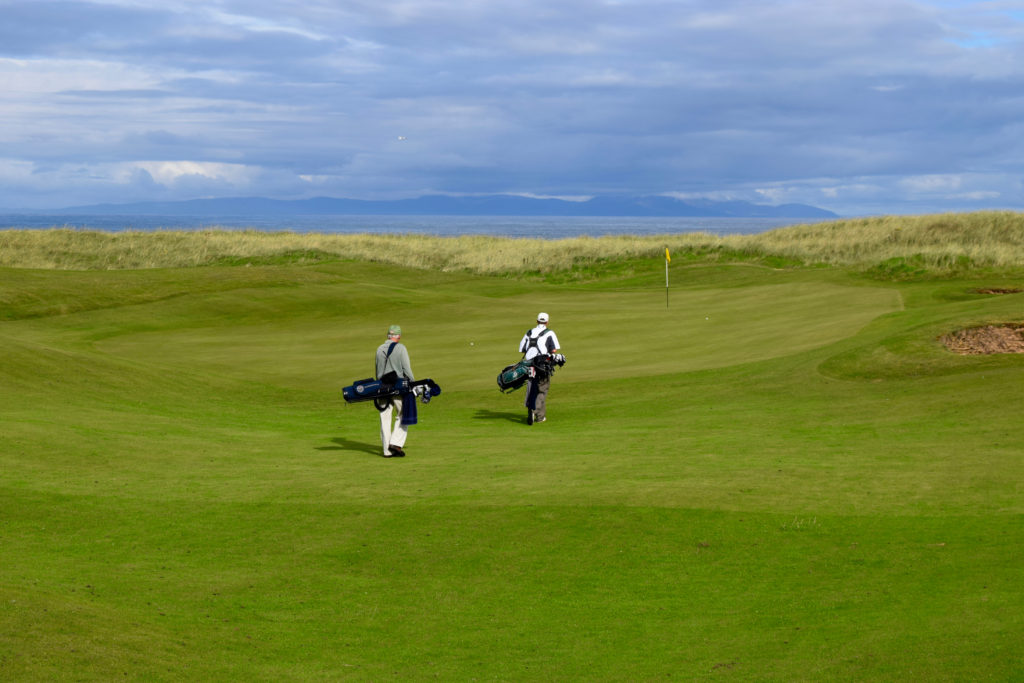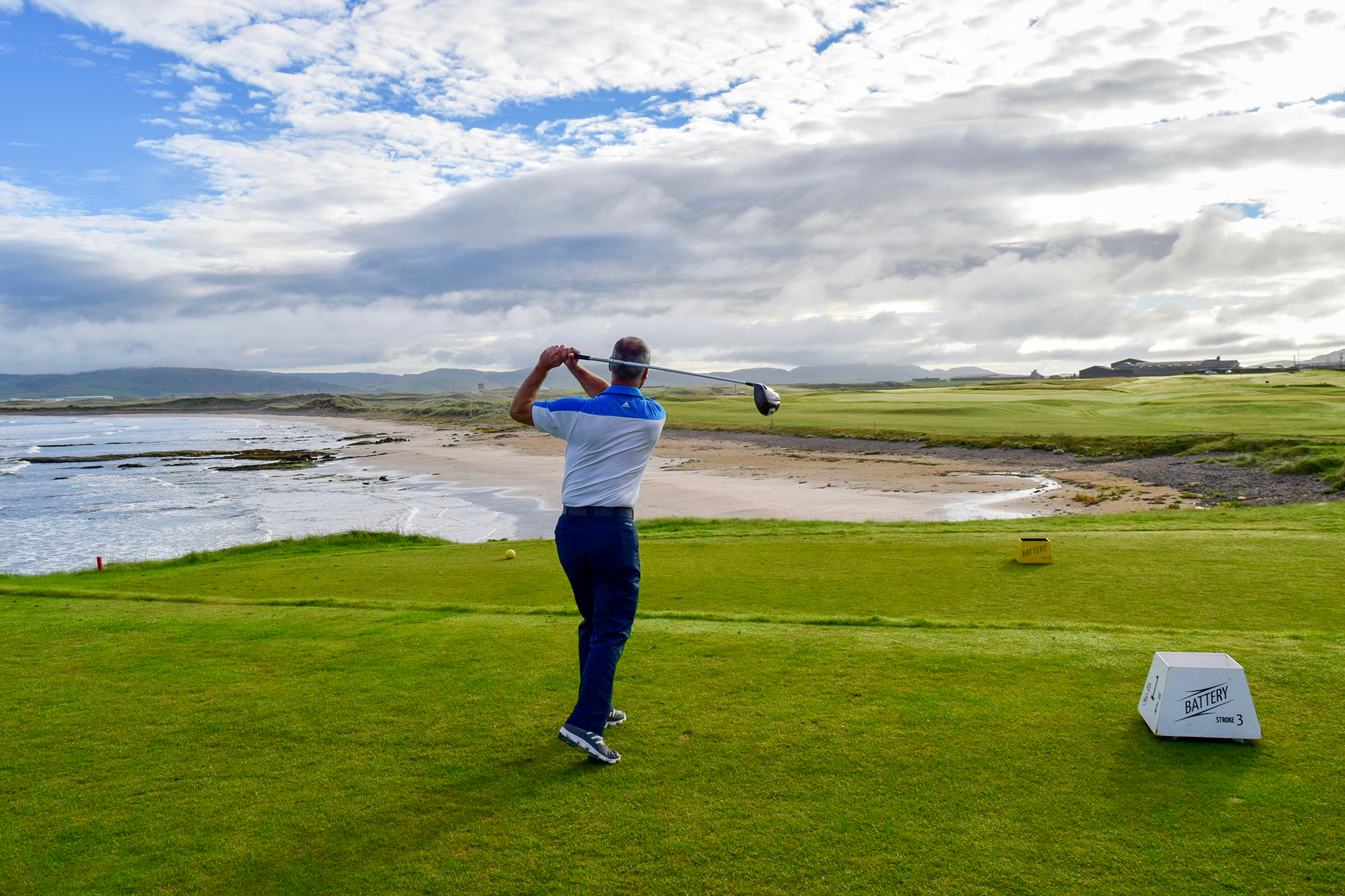Previewing Machrihanish Golf Club
Fell in love with this course three years ago, thrilled to return
When Old Tom Morris laid out Machrihanish Golf Club in 1879 he traveled by train, steamboat and carriage to the little village of Machrihanish, on the tip of the Mull of Kintyre, on the shore of the North Atlantic Ocean.
And when he saw the dunes, and the views across the water to the islands of Islay, Jura and Gighu, and where on a clear day he could see Ireland, he famously said:
“The Almighty maun hae had gowf in his e’e when he made this place.”
Morris remodeled the original 10 holes and extended the course to 18 holes. He worked for 1 pound a day plus expenses. Others have influenced the course since then, including J.H. Taylor and, after World War II, Sir Guy Campbell. The course has stood the test of time.
More than a century later, another quote figured in the fortunes of Machrihanish Golf Club; in “To the Linksland,” published in 1992, Michael Bamberger wrote: “If I were allowed to play only one course for the rest of my life, Machrihanish would be the place.”

When I played here three years ago, with my colleagues in golf journalism Blaine Newnham, Rob Perry and Tom Cade, I understood those sentiments completely. And when Jason offered a trip to Scotland in advance of my 70th birthday in September, this was the first place about which I thought, the first place I wanted to show him in our dreamgolf adventure.
I loved the simplicity of the place, the isolation; the challenge of the course and the rugged beauty. It was a place that I could see myself staying and playing for a month, the course different every day with the whims of the weather.
The first hole is among the most famous first holes in golf, the tee shot requiring a diagonal carry across Machrihanish Bay and the beach, where walkers stroll on low tide; the more beach you dare to challenge, the closer to the green you’ll be if you reach the fairway, the 19th century version of timeless risk-reward.
I played three rounds at Machrihanish Golf Club three years ago, and my first tee shot landed in the rocks, short of the fairway, and in the next two rounds I reached it.
Writing 20 years ago in “Blasted Heaths and Blessed Greens,” the late James W. Finegan wrote: “From a tee hard by the golden strand and elevated some 10 feet above it, we play this 423-yarder on the diagonal across the Atlantic’s frothing combers to a gently rolling fairway tight along the shoreline. The problem is clearly stated: how much of Machrihanish Bay — the beach is in play — dare we bite off on this, our initial stroke of the round?”
Finegan considered the fifth through eighth holes, all par 4s, a great stretch:
“It is all there in this rough-and-tumble stretch of picturesque duneland: Elevated tees with breathtaking views across high shaggy sandhills; half-glimpsed fairways pitching and tossing at every imaginable cant or dog-legging gently around sentinel dunes; now a blind green in a hollow, now an exposed green atop a breezy shelf. … This is seaside golf at its purest and most compelling.”
The great course designer David McLay Kidd spent summers with his family at Machrihanish as a youngster, and played the course many times. When he designed Bandon Dunes, links golf was in his DNA.
A day pass at Machrihanish Golf Club is 110 pounds ($147), a single round is 75 pounds ($100). Golf Digest ranks Machrihanish Golf Club No. 61 in the world. Compared with other high-profile courses, it’s a wonderful value.
And a priceless experience.
Next: Cruden Bay Golf Club
